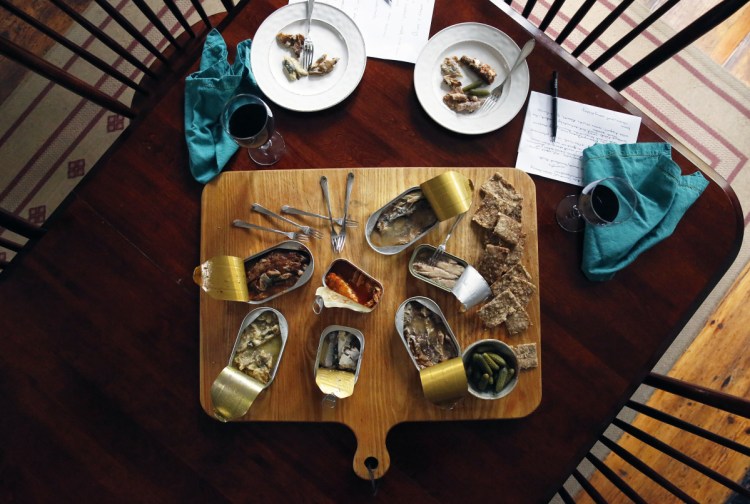I personify the target market for Bar Harbor Foods’ line of tinned sardines, herring and kippers, Cynthia Fisher explained to me. She’s the vice president of marketing and quality assurance at Whiting, Maine-based Look’s Gourmet Food Company, owner of the entire Bar Harbor Food’s product line. I am her target for canned fish because sustainability, health, ease of use and affordability all play a part in how I put dinner on the table.
We’re not talking about the cans of bony, head-to-tail, packed-in-oil pungent fish my Italian great-grandfather would have snacked on when he popped open a beer on a hot day in August, she tells me. Nope, these are boneless, and sometime even skinless, fillets women squeamish about all those little fish bones like me should be able to swallow. These little silvery fish are sustainably sourced and artisanally packaged by hand just over the Canadian border because Maine fish canneries have gone extinct. Furthermore, a survey of the two dozen varieties of sardines offered at my local grocery store show they cost between $1 and $1.50 per serving. Lastly, I can get them packed in calorie-free water with just a few simple flavor elements added, all of which I can pronounce and recognize as naturally occurring foodstuffs.
So why haven’t I eaten more of them to date? Probably because I am an average American. According to National Oceanic and Atmospheric Administration statistics tracked over the last 30 years, the average American has annually consumed a paltry one to three ounces of canned sardines – both the 3-inch little ones known (and loved) worldwide as sardines and the juvenile herring we in Maine have long called sardines because they swim in the same gene pool. For comparison’s sake, Americans consumed between two and four pounds of canned tuna annually in that same time period.
Although the consumption numbers don’t yet reflect it, Fisher – who distributes millions of cans of Bar Harbor’s seven varieties of sardines and herring in grocery stores across North America, throughout Europe and in the Caribbean – believes many planets have aligned to position canned sardines for growth. Scientists and third-party certification bodies hold them up as sustainable seafood and track them accordingly; dietitians recommend them for brain development, bone health and weight loss; chefs are doing interesting things with them on appetizer menus to help whet the modern American appetite for them; and, eaters concerned about methylmercury levels in tuna can use them as a low-mercury alternative for their sandwich fillings and salad toppers.
I fully understand the intellectual arguments of why I should be eating more sardines. But I needed to be convinced that I could, in fact, enjoy eating more sardines. I found Fisher’s recipe for a Herring Wine Party posted on the Bar Harbor Foods website in which she essentially brings sardines into the realm of an all-you-can-eat bar – think taco bar or ice cream sundae bar. She supplies all of the fixins any one might need in order to get them to try just one sardine.
I adapted the “recipe” to create my own I-need-to-be-convinced tasting scenario. I bought 10 cans of sardines of various brands and preparations, a baguette for them to ride on and a jar of palate-cleansing cornichons. A sardine-loving friend brought the wine, and we harangued my 17-year-old daughter to join our soiree because she’s already mad for smoked fish and anchovies but had never eaten a sardine because I am her mother.
This was not a scientific case study by any measure. My friend’s notes were meticulous, mine scattered and my daughter’s comprising a simple 1 to 10 scale. My friend preferred the ones from Portugal I’d picked up from a specialty food shop as they played closest to her ideal of how good a bone-in sardine can be. I favored the boneless, skinless ones with just a bit of cracked pepper in the mix. And my daughter went all in for the kippers, smoky Gulf of Maine herring packed in just a little salt water. Of course, there is no accounting for taste, but the fact of the matter remains: we sat and talked for two hours about how we were eating more sardines.
ABOUT THE WRITER
CHRISTINE BURNS RUDALEVIGE is a food writer, recipe developer and tester, and cooking teacher in Brunswick, and the author of “Green Plate Special,” a cookbook from Islandport based on these columns. She can be contacted at cburns1227@gmail.com.
Send questions/comments to the editors.



Comments are no longer available on this story